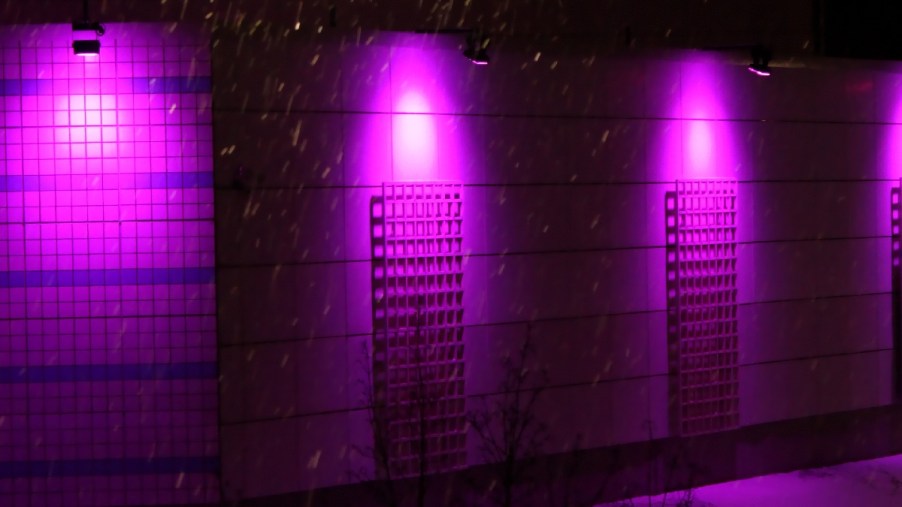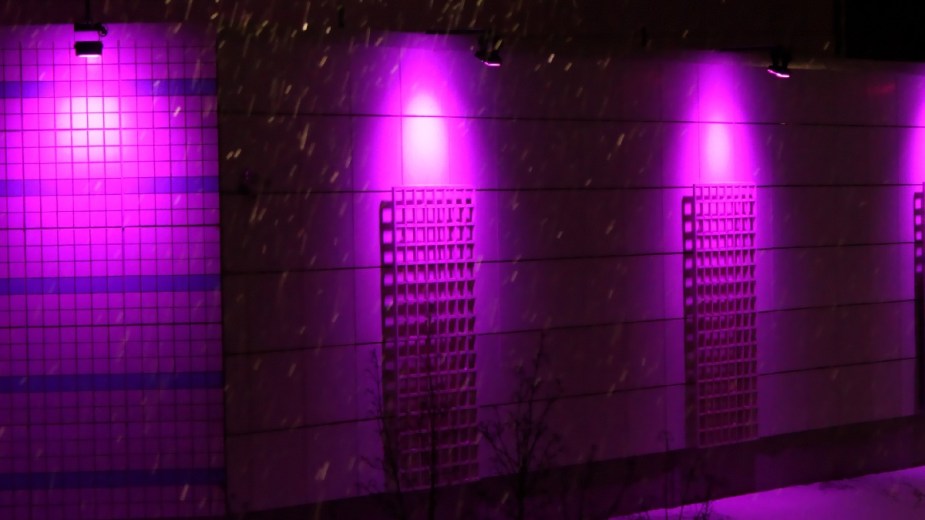
Why Are Street Lights Mysteriously Turning Purple in Cities?
A bizarre phenomenon is sweeping across cities in the United States and elsewhere around the world. Perhaps you’ve seen it as you drove by in your car. Street lights are mysteriously turning purple. Why is this happening?
Street lights are spontaneously turning purple: Is it the ghost of Prince?

Dating back to 2020, there are reports of street lights in cities turning purple. This reported purpling comes from states such as Wisconsin, California, New York, New Mexico, Maryland, North Carolina, and Florida. Internationally, this phenomenon has hit Ireland and Vancouver, Canada.
How do you explain the purple street lights? Is the ghost of Prince wreaking havoc with his “Purple Reign?” Is Barney the Dinosaur or Grimace from McDonald’s rampaging across the land? Are fans of sports teams with purple uniforms, such as the Los Angeles Lakers or Minnesota Vikings, trolling fans from other teams? Are hippies “peacing out” with their black lights?
Insider spoke with Jeff Brooks, a representative for Duke Power. The company handles street lights in parts of Florida and the Midwest, as well as the Carolinas. He said, “I’ve had people call and ask if this was because it’s Halloween, or because their football team in that area wears purple.”
However, the street lights spontaneously turning purple are not because of the ghost of Prince, a sports team, Halloween, black light-loving hippies, or Barney and Grimace. It’s due to a more mundane reason, but no less concerning.
Defective LED lights are the cause of the problem

In recent years, LED lights have become ubiquitous — in homes, headlights and taillights on cars, and street lights. The market for LEDs is massive — garnering $20 billion in revenue each year.
One reason for their rising popularity is that they don’t overheat. They are also more efficient, making them more economical and climate-friendly. While most other types of lights require intermediate steps to function, LED lights have a direct electron-to-photon swap. Additionally, LEDs last longer. The ones for the street lights are supposed to last a decade.
The reason why street lights are turning purple in cities is because of defective LED lights. For Duke Power, the defective LED lights affect only 1% of the total street lights. However, that percentage amounts to around 5,000 street lights, resulting in a purpling in many cities.
The problem is due to the packaging that surrounds the LED street lights. LED lights come in a variety of colors, but most modern ones have wavelengths that combine to create a blue hue as seen by the human eye. However, the packaging surrounding the lights typically results in the appearance of a white light. And for the defective LED street lights, the phosphorous laminate in the packaging degrades after the initial installation. When the laminate degrades, the color tint of the street light turns purple.
The defective purple LED street lights are manufactured by outsourced third-party vendors in Asia
Duke Power and other and other power companies are not to blame for the defective LED lights, though — at least not directly. In recent years, there has been a consolidation of the LED light business. Now, a company called Acuity Brands dominates the market in the United States.
Insider spoke to representatives from various cities around the country that had purple street lights — and all of them said they bought their LED lights from Acuity. Apparently, from 2017 to 2019, Acuity had issues with defective LED lights that it outsourced to third-party vendors in Asia.
Acuity undoubtedly chose these third-party vendors because they could make the LED lights more cheaply. Unfortunately, the lower cost resulted in lower quality. To avoid infringing on the patents of higher quality, more expensive versions of LED lights in North America, the outsourced vendors in Asia built lower-quality ones. The quality of the outsourced LED lights was also likely affected by the vendors manufacturing them at a larger scale — with fewer quality control measures. Acuity claims that it is replacing all of the defective lights that are under warranty.
Michael Pecht, an electronics expert, said, “I find so often that companies don’t really know what they’re buying. They’re looking at price. It’s really a supply-chain-management problem.”
If you drive or walk by purple street lights in your city, don’t fret. You’re not hallucinating, nor have you seen a ghost. The purpling in cities around the world is due to defective LED lights — and the vagarities of the global supply chain.


